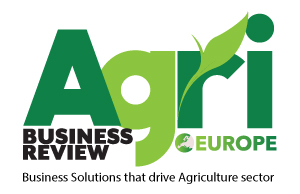Thank you for Subscribing to Agri Business Review Weekly Brief
Reimagining Farm Equipment Ownership in Canada
Canadian agriculture is shifting from ownership to Equipment-as-a-Service (FEaaS), promoting flexibility, sustainability, and technological advancement through subscriptions, leasing, and equipment-sharing platforms.

By
Agri Business Review | Monday, September 22, 2025
Stay ahead of the industry with exclusive feature stories on the top companies, expert insights and the latest news delivered straight to your inbox. Subscribe today.
Canadian agriculture is experiencing a fundamental transformation as traditional farm machinery ownership transitions to the more agile and cost-efficient model of Farm Equipment as a Service (FEaaS). This emergent paradigm, driven by the convergence of economic imperatives and technological progress, prioritizes access over ownership, offering farmers a range of flexible solutions to address their operational needs. From subscription-based services and sophisticated leasing arrangements to the expanding realm of digital equipment-sharing platforms, the Canadian agricultural sector is being reconfigured, one shared harvester and subscription-based drone at a time. This evolution transcends mere cost reductions; it signifies a progression towards a more sustainable, adaptable, and technologically advanced future for farming in Canada.
Deconstructing FEaaS Models
The FEaaS ecosystem in Canada is far from uniform; it encompasses a spectrum of models designed to meet diverse operational needs and financial realities. This flexibility allows farmers to adopt approaches that best align with their scale, strategy, and cash flow—whether that means predictable subscriptions, flexible leases, or collaborative sharing platforms.
Subscription-based services are at the forefront of this shift, offering farmers access to fleets of cutting-edge machinery through recurring fees rather than heavy upfront investments. Much like software subscriptions, these packages often include maintenance, software updates, and even data-driven agronomic support. The model transforms equipment ownership into a service, freeing up capital while ensuring farmers can adapt quickly to seasonal demands and remain equipped with the latest technologies, from autonomous tractors to precision sprayers.
Traditional leasing is also being modernized within the FEaaS framework, offering structured agreements that strike a balance between predictability and flexibility. Farmers can opt for operating leases to cover seasonal needs or finance leases that provide eventual ownership options. In parallel, digital equipment-sharing platforms are developing, enabling peer-to-peer rentals where underutilized machinery generates income for some and cost-effective access for others.
Technology Powering the FEaaS Revolution
Modern farm equipment is increasingly equipped with a vast array of sensors that collect and transmit a wealth of data in real-time. This is the realm of the Internet of Things (IoT) and telematics. These technologies provide detailed information on everything from engine performance and fuel consumption to location and operational efficiency. For FEaaS models, this data is invaluable. It enables predictive maintenance, allowing service providers to identify and address potential issues before they lead to costly downtime. Telematics also forms the basis for usage-based models, where farmers pay for equipment based on the number of hours it is used or the acreage it covers. This granular tracking ensures fair and transparent billing for both the provider and the user.
FEaaS is a key enabler of precision agriculture, a farming management concept based on observing, measuring, and responding to inter- and intra-field variability in crops. By providing access to the latest equipment, these service models empower farmers to leverage sophisticated technologies, such as GPS-guided steering, variable-rate application of inputs, and drone-based crop monitoring. The data generated by this equipment can be integrated with farm management software to provide actionable insights, helping farmers to optimize their yields, reduce waste, and make more informed decisions. This data-driven approach is at the heart of modern, sustainable farming practices.
Connecting Farmers and Machines
Underpinning the subscription and sharing models are sophisticated digital platforms that manage the complex logistics of equipment access and utilization. These platforms provide a seamless user experience, allowing farmers to browse available equipment, schedule rentals, and process payments with ease. They also handle the crucial back-end functions, including inventory management, maintenance scheduling, and customer support. The intuitive nature of these platforms is critical to the widespread adoption of FEaaS, making it as simple to book a combine harvester as it is to order a ride-sharing service.
The progression of FEaaS in Canada indicates sustained growth and innovation. As technology becomes increasingly integrated into all facets of agriculture, the need for adaptable, economical, and technologically advanced equipment solutions will undoubtedly escalate. The transition from ownership to access represents more than a transient trend; it signifies a fundamental reassessment of how agricultural enterprises are outfitted and administered. By adopting subscription models, leasing, and equipment-sharing platforms, Canadian farmers are strategically positioning themselves for a future characterized by enhanced efficiency, productivity, and resilience. The servitization of the tractor extends beyond the machinery itself; it pertains to equipping the forthcoming generation of Canadian agricultural leaders with the requisite tools and adaptability to prosper in a global marketplace.





